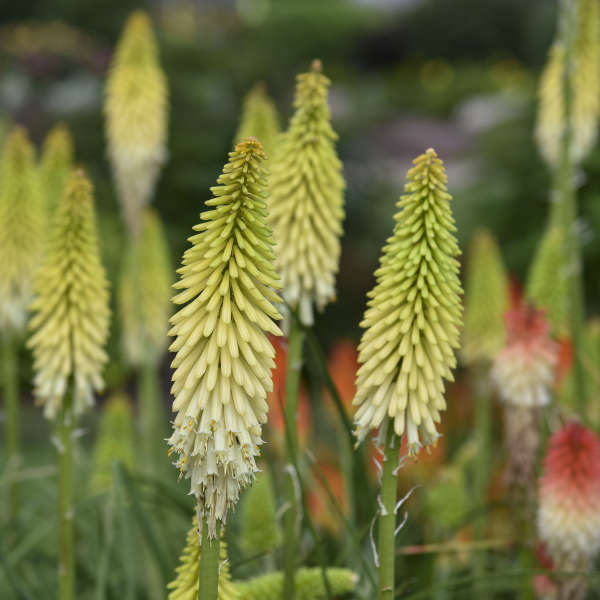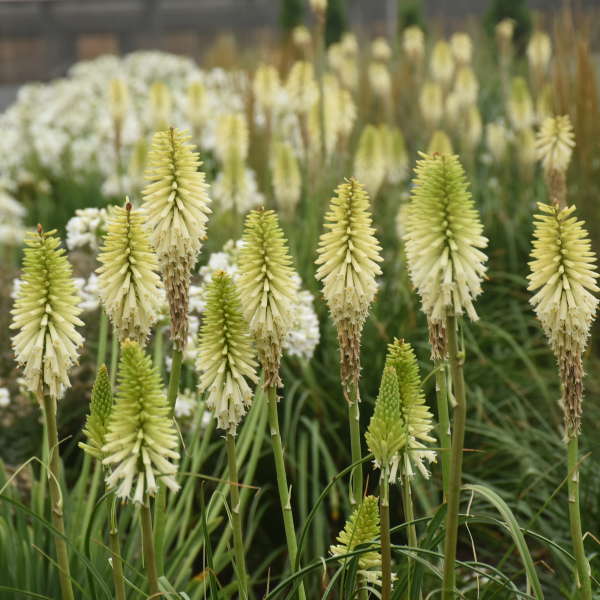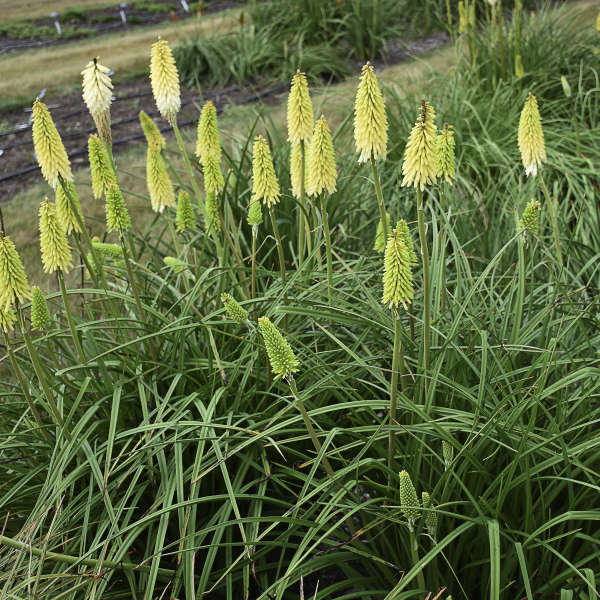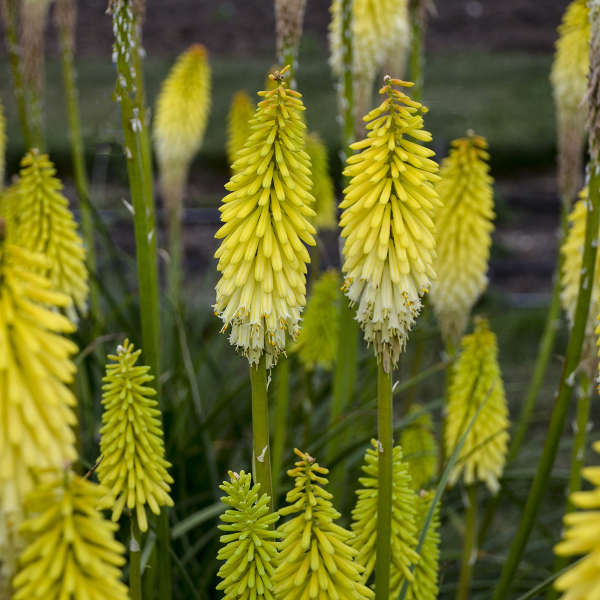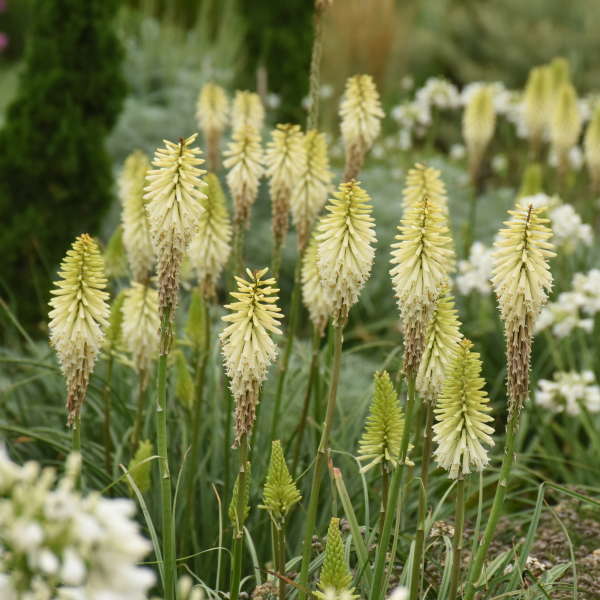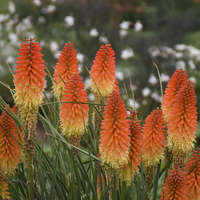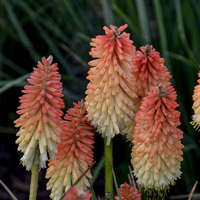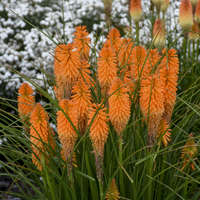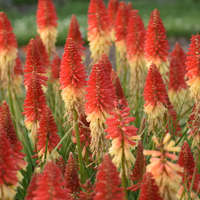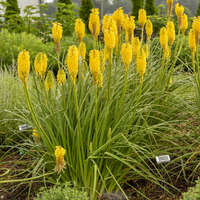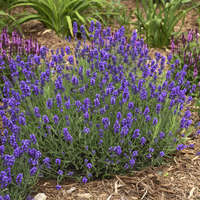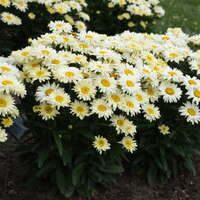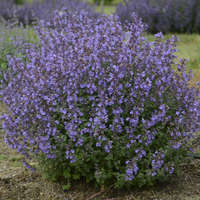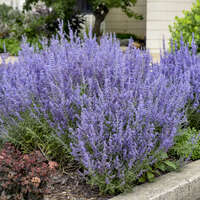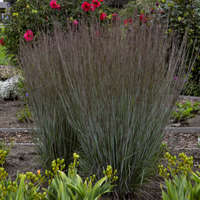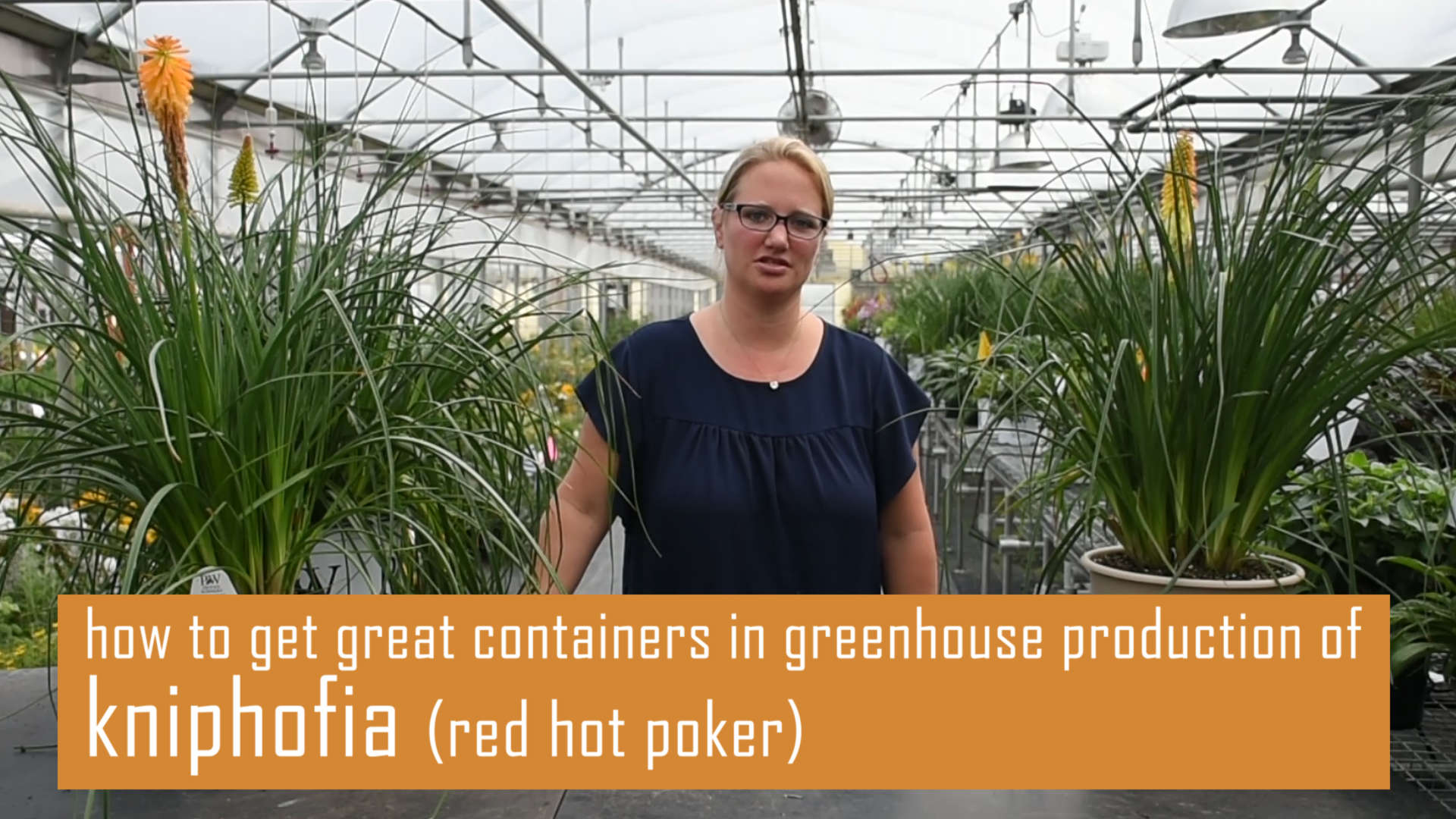Kniphofia 'Flashpoint' PP31282
PYROMANIA® Collection

Common Name: Red Hot Poker
Chartreuse yellow buds mature to creamy white as the flowers open. The last member of the collection to bloom.
Members of the PYROMANIA® Collection are a rainbow of hot colors including red, orange, and yellow. The spiky flowers and upright habit gives a very unique drama to your landscape, with rebloom extending the color late into the season. Grass-like foliage provides textural contrast to bold-leaved perennials, like Hibiscus. These tropical looking plants are hardy to either zone 5b or 6, if you provide protection.
Commonly called Red Hot Poker or Torch Lily for their tall flower spikes. These South Africa natives offer tremendous garden value by combining grass-like foliage with tall flower scapes. An excellent perennial for the middle of the border.
